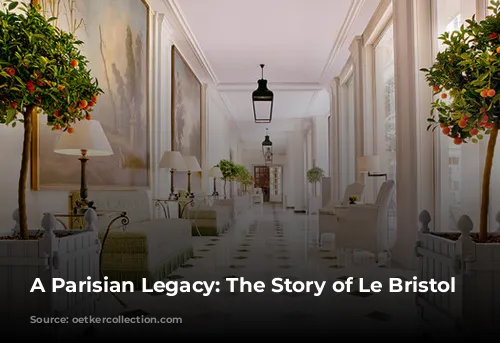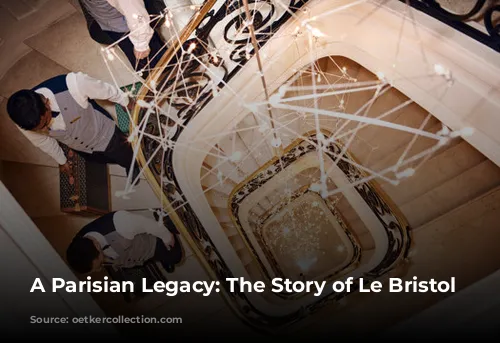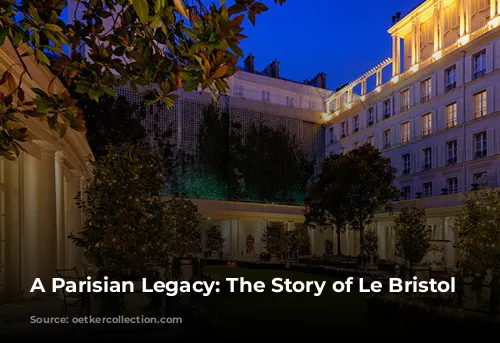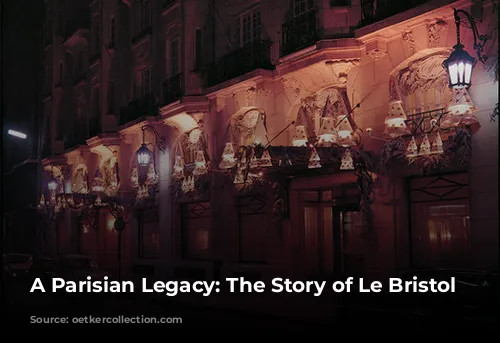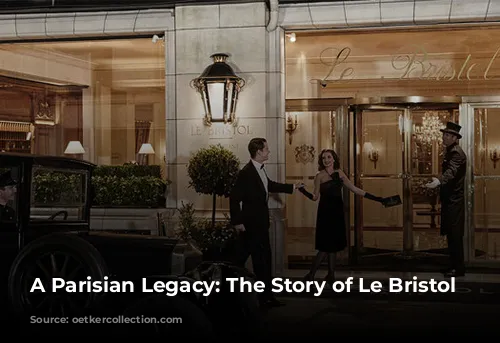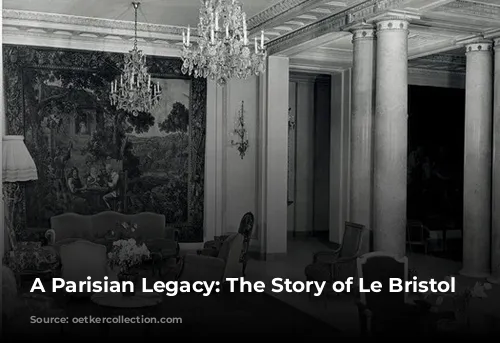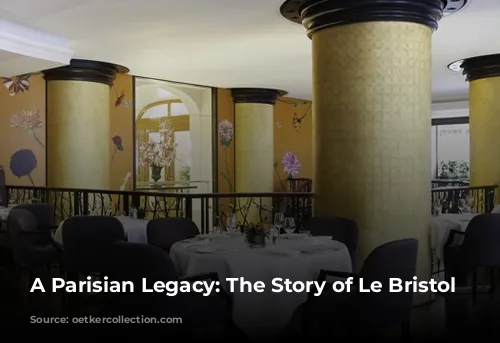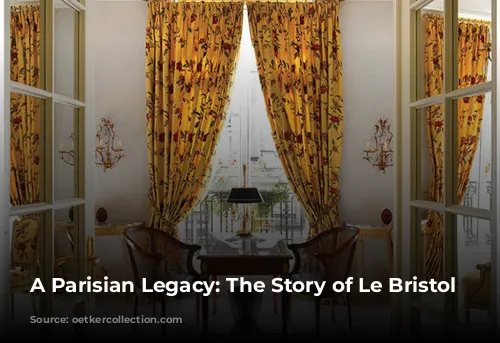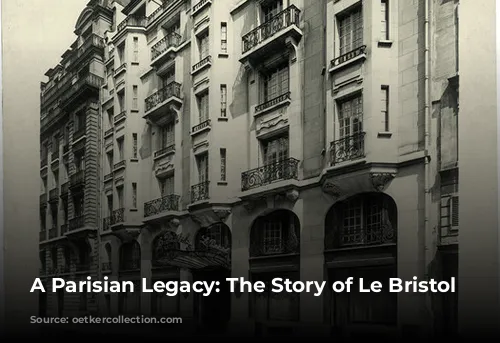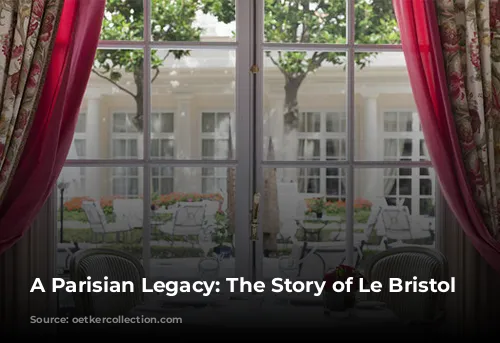Le Bristol Paris, a name synonymous with luxury and elegance, has a story as rich and captivating as the city it calls home. Its journey, intertwined with the evolution of Parisian fashion and cultural eminence, began centuries ago, in the heart of the Faubourg Saint-Honoré.
This iconic Parisian district, once a tranquil expanse of meadows, transformed into a hub of opulence and refinement, attracting aristocracy and artists alike. Its history began in 1715, when the French court, following the passing of King Louis XIV, returned to Paris, leaving the grand palace of Versailles behind. This move sparked the construction of magnificent mansions on the previously green fields, setting the stage for the Faubourg Saint-Honoré’s rise to prominence.
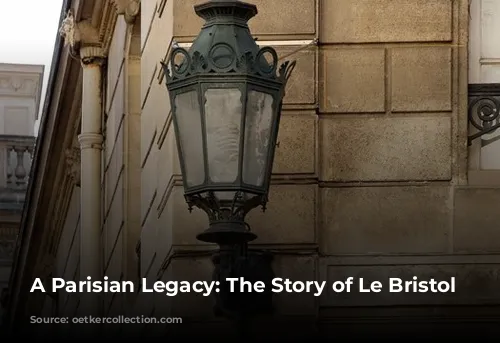
From Humble Beginnings to a Parisian Icon
The Faubourg Saint-Honoré transformed from a picturesque landscape into a symbol of sophistication, becoming home to some of the most celebrated luxury brands in the world. The Elysée Palace, the official residence of the Presidents of France, further elevated the district’s status at the end of the 19th century. A tapestry of fashion and luxury was woven in the streets of the Faubourg Saint-Honoré, with the arrival of renowned names such as Hermès, the famed saddler, and Jeanne Lanvin, the celebrated dressmaker, who established their boutiques in the area. This marked the beginning of the Faubourg Saint-Honoré’s transformation into a global epicenter of fashion and luxury.
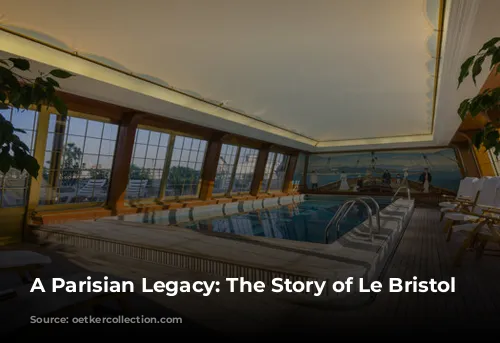
The Birth of a Parisian Jewel: Le Bristol Paris
In 1923, Hippolyte Jammet, a visionary hotelier, acquired a grand property that once belonged to Jules de Castellane. His ambition was to create a haven of unparalleled luxury, a hotel that would become a symbol of Parisian refinement. Inspired by the legendary Bishop Frederick Hervey, 4th Earl of Bristol, a renowned traveler known for his refined taste and high standards, the hotel was aptly named Le Bristol.
The hotel’s doors opened in April 1925, coinciding with the vibrant and free-spirited era of the Roaring Twenties. This period, marked by the electrifying energy of Josephine Baker, Sydney Bechet, and the Charleston, witnessed a magnetic pull of cultural and artistic brilliance towards Paris. The city was a canvas for creativity, drawing in the likes of Rochas, Balenciaga, Chanel, Schiaparelli, Picasso, Mondrian, and Dali. Le Bristol became a sanctuary for these luminaries, a place where creative energy pulsed and inspiration blossomed.
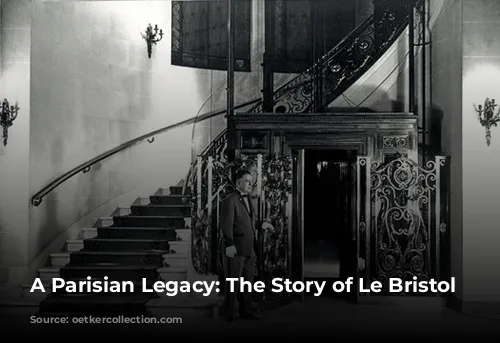
A Legacy of Elegance: From the 1950s to Today
Le Bristol’s allure continued to captivate, drawing in a who’s who of the world’s most celebrated personalities. In 1954, Pierre Cardin opened his first boutique in the Faubourg Saint-Honoré, solidifying the street’s position as a global fashion hub. Other fashion giants followed, including Christian Lacroix and Louboutin, further cementing Le Bristol’s reputation as a destination for fashion enthusiasts.
The hotel’s guest list reads like a roll call of history, with distinguished figures such as Konrad Adenauer, Kim Novak, Rita Hayworth, and Charlie Chaplin gracing its halls. The hotel’s proximity to the renowned fashion houses also made it a favorite spot for fashion photographers, capturing the essence of the Parisian fashion scene.
Pierre Jammet, born just days before Le Bristol opened, grew up within its walls, inheriting a passion for hospitality and a deep understanding of the hotel’s soul. When he assumed the reins in 1964, he embarked on an ambitious expansion project, adding 60 new rooms and suites, a charming interior garden, and a magnificent pool, designed by Professor Pinnau, the architect behind Onassis’ yacht.
This expansion further cemented Le Bristol’s status as a Parisian landmark, its pool overlooking the city, offering guests breathtaking views. In 2007, Le Bristol acquired the adjacent building on Avenue Matignon, expanding its footprint and further enhancing its luxurious offerings. This move also marked the launch of Le Bristol’s iconic Fashion High Teas, a celebration of the hotel’s deep connection to the world of fashion.
The hotel’s commitment to art and culture became even more evident with the introduction of sculpture exhibitions in its enchanting garden, showcasing the work of renowned artists such as Diane de Württemberg. The garden became a haven for artistic expression, with works by André, Yue Minjun, Richard Texier, Osvaldo Rodriguez, and many others gracing its grounds.
The year 2009 marked another significant milestone with the unveiling of a new wing, adding 21 rooms, five suites, and a highly acclaimed restaurant, 114 Faubourg, which quickly gained a reputation as one of the most sought-after dining destinations in Paris. This expansion solidified Le Bristol’s position as a leading destination for luxury travel and fine dining.
Le Bristol Paris’s commitment to offering unparalleled experiences continued with the introduction of two Signature Suites in 2011: the Honeymoon Suite, offering breathtaking views of the city from its perch on the eighth floor, and the Imperial Suite, the hotel’s largest suite at 320m², a haven of opulence and luxury. The hotel also unveiled its exquisite Spa Le Bristol by La Prairie, spread across three floors, featuring eight treatment rooms and a dedicated children’s play area, Les Amis d’Hippolyte, making it a haven for families seeking relaxation and rejuvenation.
Le Bristol Paris’s journey, from its humble beginnings as a grand mansion to its current status as a beacon of Parisian elegance and luxury, is a testament to the enduring power of vision, passion, and commitment to excellence. It has become a timeless symbol of Parisian refinement, a place where history, luxury, and contemporary artistry intertwine seamlessly, captivating guests from around the globe. The hotel’s unwavering dedication to providing exceptional experiences and embracing the spirit of the Faubourg Saint-Honoré has ensured that Le Bristol Paris remains an enduring Parisian legend.
